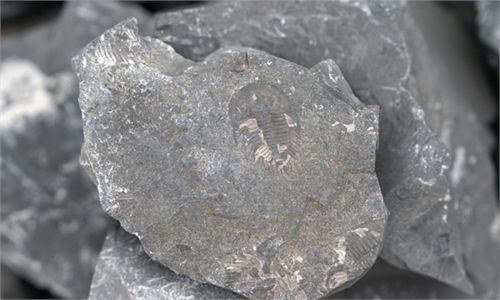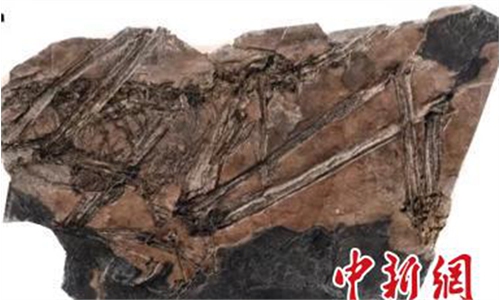ARTS / CULTURE & LEISURE
Fossil sponge of 540 million years old discovered in Hunan Province

Photo: Courtesy of Hunan Museum of Geology
A piece of fossil sponge that formed during the early Cambrian period was recently discovered in Changde, Central China's Hunan Province.
The discovered fossil sponge can date back to 540 million years ago. It ranges around 4 centimeters in height and 3.5 centimeters in width. Paleontologist Zou Hesi told the Global Times that the size is "giant" for a sponge from that period of time.
"Sponges become bigger and bigger over time; for example, another fossil piece dating back to around 300 million years ago was also recently discovered in Ireland. It was about 50 centimeters," Zou told the Global Times. Discovered near the Cliffs of Moher, the piece was named as "Cyathophycus balori." It is so far the largest known fossil sponge in the world.
The 4-centimeter Chinese piece was unearthed unexpectedly during a field survey that local researchers were conducting in the Taoyuan district of Changde. Tong Guanghui, a research fellow at the Hunan Museum of Geology, told media that the team found a piece of rock on their way to research destination in the town of Sanyanggang.
"So we stopped, and used a geological hammer to examine the piece. It was excavated in such a complete condition and we were all thrilled about the discovery," said Tong.
Li Yaping, a Wuhan-based geologist, told the Global Times that such fossils of early Mollusca are difficult to find and preserve. The recent discovery provides a vital scientific proof for further investigating the species' evolution as well as the changing environmental conditions reflected in the creature's development.
"The discovery shows that the ancient ocean was very productive since abundant plankton sufficiently supported a sponge of such a large size," said Tong.
The fossil is currently collected by the Hunan Museum of Geology. It is also the best-preserved fossil sponge collected by the museum since 1958. According to Tong, the museum will carry out restoration and then put the piece on display in the future.
Truly ancient creatures, sponges have been living in the ocean since 600 million years ago.
They often dwelt on the seafloor and obtained food from seawater that flew through its body.
Prior to the Hunan discovery, another miniature fossil sponge was found in Southwest China's Guizhou Province in 2015.
The fossil was the size of a grain of rice. However, it is the world's oldest and most credible fossil of a primitive animal entity ever found as it dates back to 600 million years.



